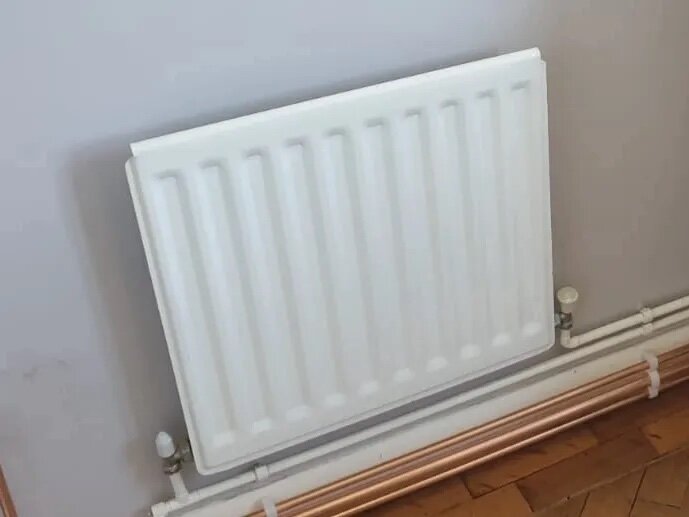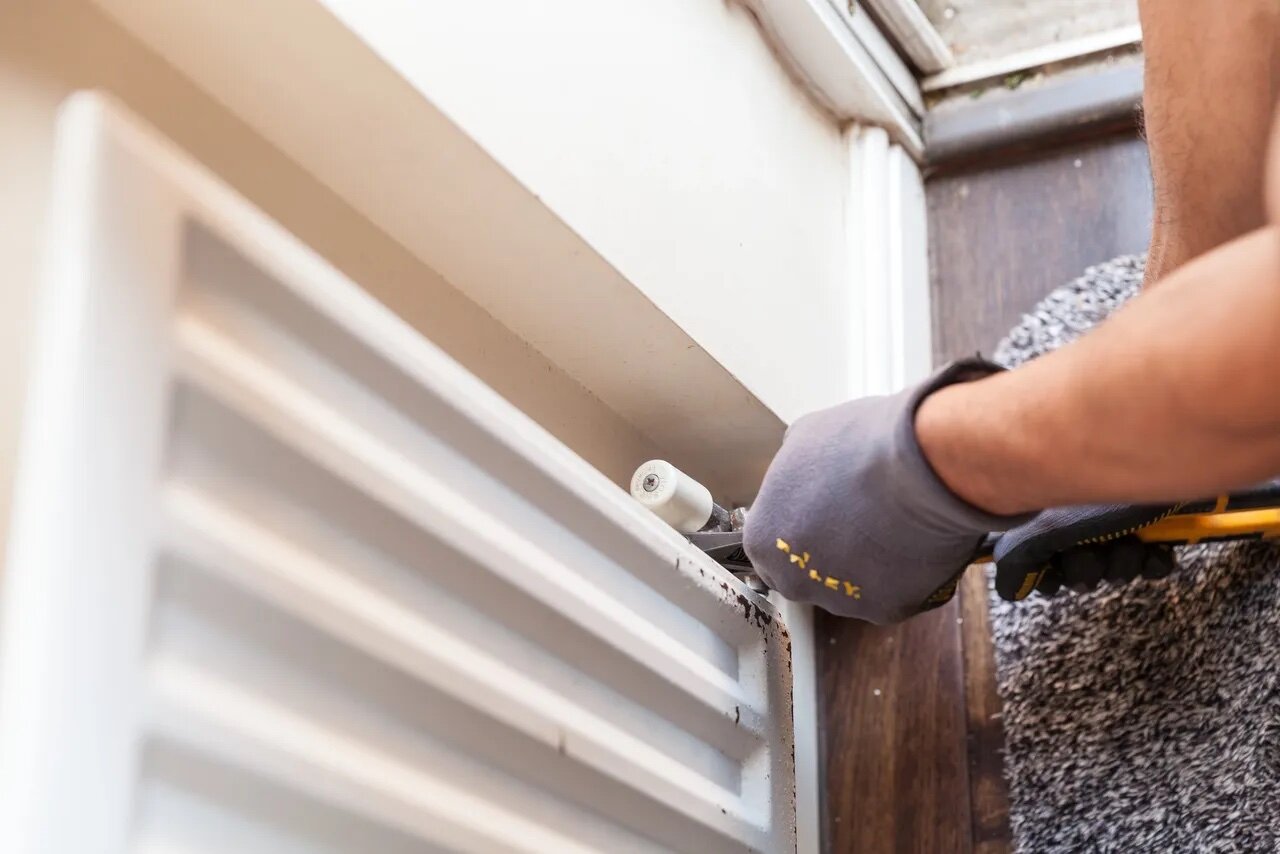Whole System Approach Part 2
Welcome back to part 2 of letting you in our Whole System approach. This week, and indeed the last several weeks, has been extremely busy for us. Not least because of the volume of work we have coming in, but our quest to up our game has seen both Pete and I doing our air source heat pump training with Daikin to be part of their Sustainable Installer Scheme. It has been remarkably interesting, and we are looking forward to the remainder of our training. Air source heat pumps as well as many other renewable sources are going to be forming a large part of every single household over the coming years. We intend on being part of the energy revolution.
Anyhow, on to radiator sizing. So, in the previous blog post we went through and touched on in some depth the subject of heat loss. We looked at what heat loss is, how we measure it and come up with final calculations. We now have a pretty accurate calculation made for each individual room so we know exactly how much heat is required in there to produce a given temperature. Now, I can assure you, most plumbing and heating engineers would not actually have got this far but it is now time to choose the radiators. Again, most engineers would size the radiator to match the output. So for example if your bedroom heat loss calculation gives a result of 500 Watts being required to give 18 degrees C, then surely I just look in my catalogue and find a radiator that will give out a minimum of 500 Watts, maybe just over to be on the safe side???
In theory, and up until the last 5-10 years, this would have been the answer and in some cases where customers have particularly old boilers, it could still be the right answer. However, I would say at least 60-70% of our customers now have condensing boilers and regulations are pushing everybody over to this as well as even further on to the renewables such as air source heat pumps too. With this regulation the actual aims of heating and the science has flipped on its head. With older boilers the general aim would be to run everything at a high system temperature of 70 degrees and over. But with condensing boilers and renewables it is all about reducing these temperatures as much as possible for maximum efficiency. There are some magic numbers we look at with heating systems nowadays that have theories behind them, they are 50/30. This is seen as the ideal maximum flow and return system temperatures for a condensing boiler to work at its absolute maximum efficiency, use the least gas and release the least CO2 and NOx in to the atmosphere. We ideally want this ratio even lower which it will be on heat up, but this is the maximum we strive for.
Fred, what on earth does this have to do with radiators?!?!?!? I hear you, do not worry. Bear with.
When you purchase a radiator and look at the technical information, they give you an output figure (say 500 W for your bedroom) but then they also give you another figure which in most cases is DT50. This DT50 is especially important because that is telling us the output of the radiator (500W) is only the output when the radiator temperature is 50 degrees above the room temperature. So, if we need 500W to keep our bedroom at 18 degrees in the very cold weather, that radiator needs to be at 68 degrees or higher surface temperature.
Bathrooms and living rooms are usually specified to have room temperatures of 21 degrees which then means that radiator needs to be at a temperature of 70 degrees plus, which is getting incredibly hot.
I am hoping you, as readers, are beginning to see where I am going with this. Considering pipework heat losses of around 10% in most cases, your boiler will need to be set on its maximum temperature of 80 degrees to supply you with comfort. As mentioned already in this blog and in other posts, we are after low working temperatures. Your lovely efficient condensing boiler will no longer be condensing once it goes over about 55-60 degrees, so it is no longer working in its most efficient state, far from it in fact. It is no longer that lovely efficient wallet and planet saving appliance you were sold, it is no better then your previous boiler, let alone the additional wear and tear which condensing boilers seem more susceptible to in my opinion.
So, if we are looking for lower working temperatures to keep our boiler working efficiently, but the radiator I have chosen specifies it needs to be at 70 degrees in order to produce 500W, what do we do???
BIGGER radiators!!! (or underfloor heating)
There are further calculations we use for this, but we would then look at, for example, a radiator which specifies it emits 1000W of heat. Using our calculations we can then work out how much heat we would accurately get from that radiator at a lower temperature of 60 degrees. Low and behold, we may work out it gives us 480W, which is not quite enough. So, we would then look at the next size radiator up, use our calculation until we arrive at the figure we require. Hey presto, we are now beginning to build a system which is designed to work at lower temperature. This process needs to be followed for each room.
There is a caveat to this method in that bigger radiators require more wall space and they get a bit more expensive. But it is worth it as the pro’s of a low temperature system far outweigh this. Here are some of them:
- Lower running costs, this will offset the investment.
- A larger proportion of radiated heat which gives more comfort then heavily convected heat from HOT radiators.
- Wear and tear on the boiler greatly reduced as parts are working at just half of their design load, longer, more reliable component life.
- Wear and tear on the heating system in general is reduced exponentially. Collision theory will tell you that chemical and physical reactions are exponentially slower at lower temperatures.
- System sludge reduced.
- Less air ingress, quieter system.
- Longer component life
I’ll let you on in little nugget of information, 50/30 is very hard to achieve in a lot of cases because many customers have hot water cylinders and radiators which undoes some the work for reasons I wont go in to as it goes further off piste, but in general we have found we can work on a balance of 65/50 with a conventional system with radiators. This will achieve a huge reduction in gas consumption as well as the additional benefits on its own. If we fit a super-efficient ATAG combination boiler with weather compensation and a smart thermostat we can get to 60/40 with ease, if not lower when used in conjunction with ‘oversized’ radiators. If we go one step further and introduce underfloor heating, 50/30 is completely possible and the holy grail can be achieved.
Correct radiator sizing is crucial in our quest of the Whole System Approach and I hope that by now you are starting to see why we take this approach. I hope you start to see that we could be like 95% of other heating engineers and companies out there but we do not. Our aim is not to be out there fitting new boilers as cheap as possible just to sell lots of boilers. Yes at times this could be all that is required if the science and maths stacks up, however in the vast majority of cases it does not and this culture of ‘The cheapest person to fit that boiler gets the work’ is a complete false economy. The customer has a nice shiny new boiler that never has a chance to do what it is designed to do and ultimately, they will not see the benefits they were sold. We do go to that Nth degree, use the science and the maths and we guarantee we will end up at a beneficial result for our customers. This will not be the cheapest, but the end result is in a different league due to our knowledge, technical expertise and quality of products we use. We stick by this, do very well in this ethos and will not go beneath these exacting standards we have set ourselves.
The next part of the approach is to size the pipework correctly in the system and then specify the rest of the hardware and technology to knit it all together. Pipe sizing isn’t the easiest or most fun subject to give a great post about so I will touch briefly on this next time and then concentrate on the tech and hardware more as this is much more fun.
Have fun and be safe




